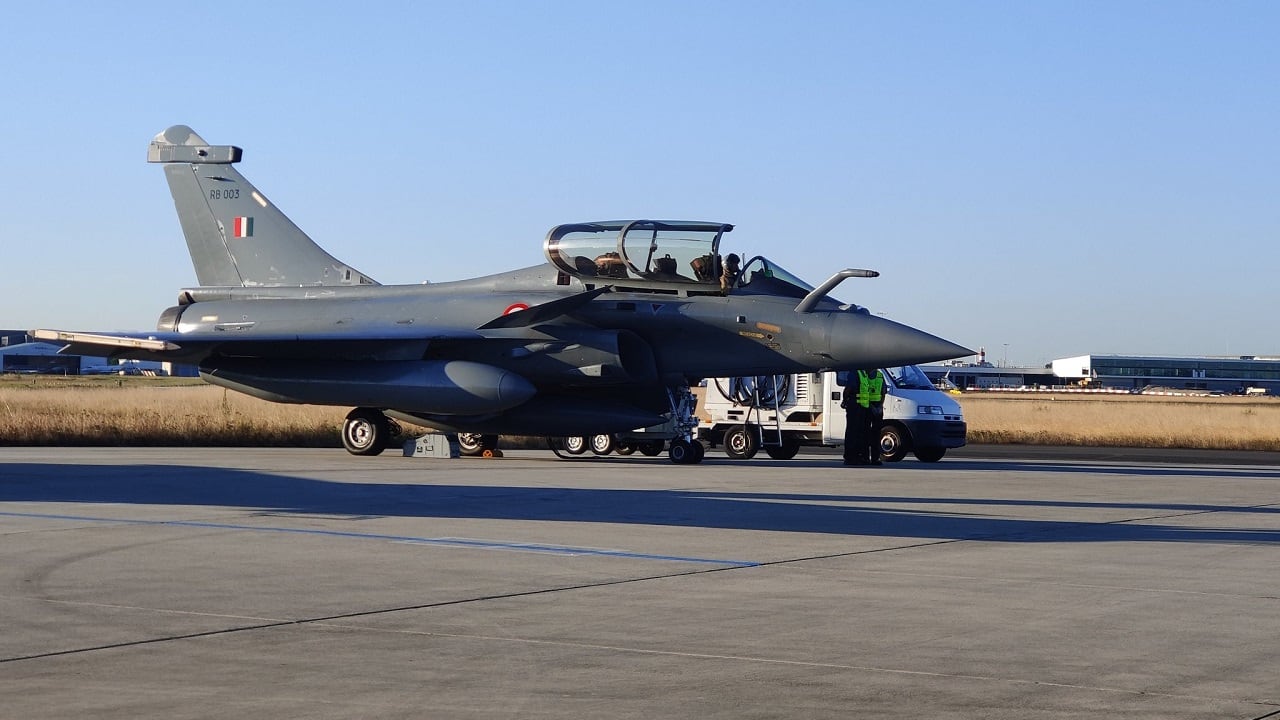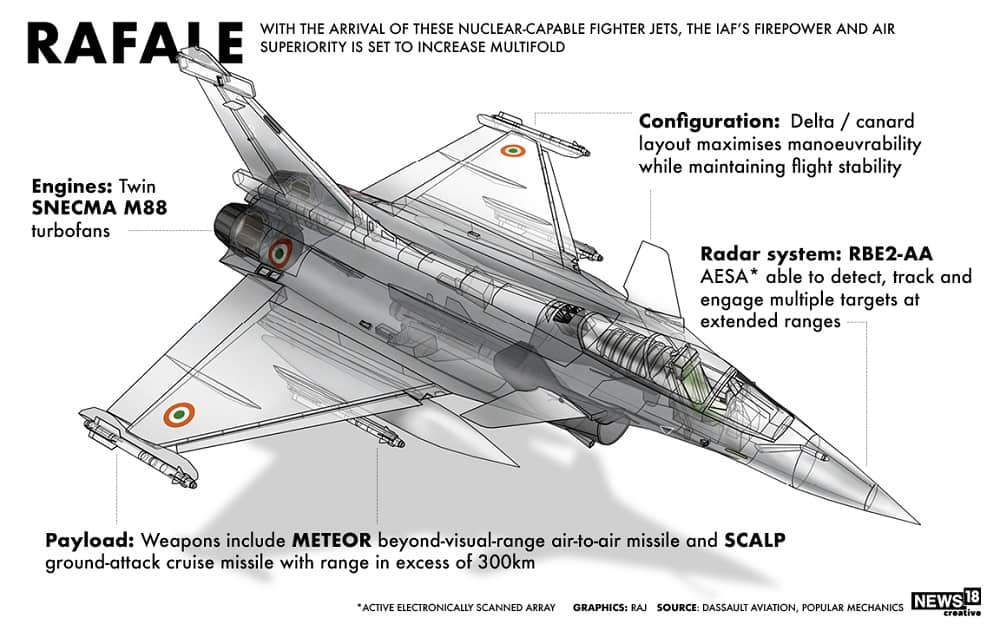Induction and deployment of the Rafale twin-engine multi-role fighter jets are being seen as a major boost for the Indian Air Force.
The first batch of the Indian Air Force (IAF)’s Dassault Rafale fighter jets is set to arrive in India on July 29, two days after taking off from France. On July 27, five of the twin-engine fighters left Dassault Aviation’s production facility in Merignac, France.
The modern fighter jets are being flown-in by IAF pilots in a 7,000-kilometre journey that comprises two legs. The aircraft were provided air-to-air refuelling by the French Air Force’s tankers during the first leg.
The convoy took a day's halt at the Al Dhafra airbase, which is partly operated by the French Air Force, in the United Arab Emirates (UAE).
All five aircraft will be flown to their new home – Ambala airbase in Haryana. Resurrected in 2019, the No. 17 Squadron -- or the ‘Golden Arrows’ stationed at Ambala -- will fly these Rafales first. No. 101, the second squadron to be equipped with Rafales, will be stationed at the Hasimara Air Force Station in northern West Bengal.
India has ordered 36 of these fighter jets, in a deal embroiled in controversy. About 12 aircraft are supposed to be delivered every year.
This will be the first induction of a new type of foreign-origin fighter jets by IAF since a batch of the Sukhois were delivered in the late 1990s.
 Indian Air Force's Rafale fighter jet at the Dassault Aviation facility in Merignac, France (Image: Twitter/@Indian_Embassy)
Indian Air Force's Rafale fighter jet at the Dassault Aviation facility in Merignac, France (Image: Twitter/@Indian_Embassy)
Ready for deployment
Amid the ongoing border dispute between India and China, it has become imperative for the IAF to be able to deploy the new Rafales as soon as possible. According to news reports, all of these five aircraft will be operationally deployed within a week.
Some of the missiles that Rafales will be equipped with have already arrived at the Ambala airbase. These include the Meteor air-to-air missile. The jets will also be equipped with the 1,300-kilogram SCALP missiles. SCALPs have a range of around 300 kilometres.
Reports suggest that 12 IAF pilots have been fully trained on the new fighter jets and many others are currently completing their training in France.Rafale aircrafts maneuvered by the world’s best pilots, soar into the sky. Emblematic of new heights in India-France defence collaboration #ResurgentIndia #NewIndia@IAF_MCC @MeaIndia @rajnathsingh @Dassault_OnAir @DefenceMinIndia @PMOIndia@JawedAshraf5 @DDNewslive @ANI pic.twitter.com/FrEQYROWSv
— India in France (@Indian_Embassy) July 27, 2020
What Rafales mean for the IAF
Rafale is a multi-role combat aircraft. This means it can be deployed in various scenarios such as carrying out combat missions to achieve air superiority, close air support, in-depth strikes, reconnaissance, anti-ship strikes and nuclear deterrence.
They will not have to fly beyond the Indian airspace to hit targets that are even 600 kilometres inside enemy territory. To put that into perspective, a Rafale can hit targets deep inside Pakistani territory while still flying over Ambala. The target could be as deep as Islamabad -- about 500 kilometres from Ambala as the crow flies.
Amid the stand-off in eastern Ladakh, the IAF has also reportedly sought emergency procurement of the HAMMER air-to-ground missile which has a range of about 60 kilometres.
The air force could eventually integrate more missiles with the Rafales, which is often categorised as a 4.5 generation aircraft for its radar-evading stealth profile.
In Pictures: IAF's Rafales | Fighter jets to touch-down in India soon; here's all you need to know

Defence analysts suggest that these Rafales would help IAF challenge the Pakistani F-16s and some of the new Chinese aircraft.
In February, former Air Chief Marshal BS Dhanoa had said that the outcome would have been different had Wing Commander Abhinandan Varthaman been flying a Rafale instead of a MiG 21 Bison during the India-Pakistan stand-off in the aftermath of the Balakot strike in 2019. Dhanoa was responding to a question about controversies slowing down defence acquisitions.
The procurement also helps IAF move toward its target of having 42 active squadrons.








